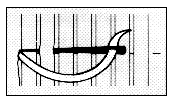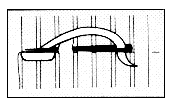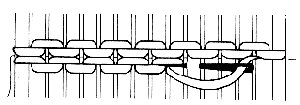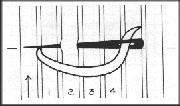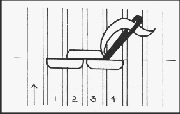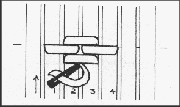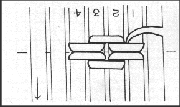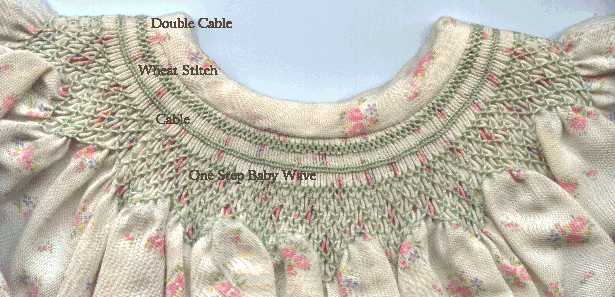 1. Stitch a base row of cable beginning with an over cable.(Represented by dark thread in diagram). 1. Stitch a base row of cable beginning with an over cable.(Represented by dark thread in diagram).
 2. With a new thread, stitch the first three cables of the alternating row directly above (as with Double Cable Stitch). As you do the third cable, instead of stitching through the pleat on the straight, angle the needle down through this pleat to below the base cable row, and bring your needle out here. 2. With a new thread, stitch the first three cables of the alternating row directly above (as with Double Cable Stitch). As you do the third cable, instead of stitching through the pleat on the straight, angle the needle down through this pleat to below the base cable row, and bring your needle out here.
 3. Stitch the next three pleats in the same manner, beginning with an over cable, angling the needle back up through the pleat with the third cable. 3. Stitch the next three pleats in the same manner, beginning with an over cable, angling the needle back up through the pleat with the third cable.
Continue along the row alternating three cables above base row and then three cables below. When worked correctly there should be one unworked cable between each group of three on alternating rows. |
